#hystricognathi
Text
Are porcupines nocturnal

#Are porcupines nocturnal skin
#Are porcupines nocturnal skin
An unpleasant scent is produced from the skin above the tail in times of stress, and is often seen with quill erection. The use of odor is when the sight and sound have failed. The rattling of quills is aided by the hollow quills at the back end of the porcupine. This behaviour is often paired with body shivering, which is used to further display the dangerous quills. The incisors vibrate against each other, the strike zone shifts back and the cheek teeth clatter. Along with the raising of the quills, porcupines clatter their teeth to warn predators not to approach. This, along with the raising of the sharp quills, deters predators. The dark body and coarse hair of the porcupine are a dark brown/black and when quills are raised, present a white strip down its back mimicking the look of a skunk. A porcupine's markings are black and white. A porcupine's colouring aids in part of its defence as most of the predators are nocturnal and colour blind. These displays are ranked from least to most aggressive. There are four main displays seen in a porcupine which are quill erection, teeth clattering, emitting of odour, and attack. Often, these displays are shown when a porcupine becomes agitated or annoyed. Defense ĭefensive behaviour displays in a porcupine depend on sight, scent, and sound. Porcupines have become a pest in Kenya and are eaten as a delicacy. It is mostly nocturnal, but will sometimes forage for food in the day, eating bark, roots, fruits and berries, as well as farm crops. The African porcupine is not a climber and forages on the ground. The North American porcupine is a herbivore it eats leaves, herbs, twigs, and green plants such as clover. Porcupines have a relatively high longevity and hold the record for being the longest-living rodent, with one individual named Cooper living past 32 years. The New World porcupines evolved their spines independently (through convergent evolution) and are more closely related to several other families of rodents than they are to the Old World porcupines. The two subfamilies of New World porcupines are mostly smaller (although the North American porcupine reaches about 85 cm or 33 in in length and 18 kg or 40 lb), have their quills attached singly rather than grouped in clusters, and are excellent climbers, spending much of their time in trees. The 11 Old World porcupines tend to be fairly large, and have spines grouped in clusters. Old World compared with New World species The two families of porcupines are quite different, and although both belong to the Hystricognathi branch of the vast order Rodentia, they are not closely related. Porcupines vary in size considerably: Rothschild's porcupine of South America weighs less than a kilogram (2.2 lb) the crested porcupine found in Italy, North Africa, and sub-Saharan Africa can grow to well over 27 kg (60 lb). Porcupines' spiny protection resembles that of the unrelated erinaceomorph hedgehogs and Australian monotreme echidnas as well as tenrecidĪ porcupine is any of 58 species of rodents belonging to the families Erethizontidae (genera: Coendou, Erethizon, and Chaetomys) or Hystricidae (genera: Atherurus, Hystrix, and Trichys). Porcupines' colouration consists of various shades of brown, grey and white. Weighing 5–16 kg (12–35 lb), they are rounded, large, and slow, and use an aposematic strategy of defence. In taxonomic terms, they form the family Erethizontidae. They are less strictly nocturnal than their Old World counterparts, and generally smaller. They live in wooded areas and can climb trees, where some species spend their entire lives. The New World porcupines are indigenous to North America and northern South America. In taxonomic terms, they form the family Hystricidae. They are large, terrestrial, and strictly nocturnal. The Old World porcupines live in Italy, Asia (western and southern), and most of Africa. The largest species of porcupine is the third-largest living rodent in the world after the capybara and beaver. Despite this, the two groups are distinct from one another and are not closely related to each other within the Hystricognathi. Both families belong to the infraorder Hystricognathi within the profoundly diverse order Rodentia and display superficially similar coats of rigid or semi-rigid quills which are modified hairs composed of keratin. The term covers two families of animals: the Old World porcupines of family Hystricidae, and the New World porcupines of family Erethizontidae. Porcupines are large rodents with coats of sharp spines, or quills, that protect them against predation. Rodent with a coat of sharp spines PorcupineĬladistically included but traditionally excluded taxa

0 notes
Text
Are porcupines nocturnal

ARE PORCUPINES NOCTURNAL SKIN
The porcupine is another one of these species. For example, many female monkeys and chimpanzees advertise their sexual readiness. There are several animal species where the female initiates mating – known as “ sex role reversal”. The female initiates contact during mating season Exceptions include reproduction and the times they spend caring for their young. Like the males, female porcupines spend most of their days alone. The only time these animals are more vocal is during breeding season, as they will fight (or dance) for the right to mate. This is especially true with males, who spend most of their lives wandering around quietly on their own. Porcupines are solitary animalsįor the most part, porcupines are solitary. So it’s less common to come across a porcupine without quills. In fact, “successor” quills start emerging only a few days after the earlier ones come out. Luckily, the loss of their quills doesn’t leave them unprotected. As mentioned, porcupines don’t shoot their quills, but they do detach fairly easily.Īs a result, it’s quite common to find porcupine quills lying on the ground in the wild. You may not know too much about porcupines, but the chances are that you know about the quills that protect their soft bodies.Īt any given time, a porcupine has up to 30 000 quills covering its body. Lost African porcupine quills are quickly replaced by new ones They are also smaller and more diurnal than their Old World counterparts. They prefer wooded habitats and are apt at climbing trees. The New World porcupines live in North and South America. This group consists of large, nocturnal, land-based animals. The Old World porcupines live in southern Europe, Asia, and across Africa. New World and Old World porcupine habitsĪlthough both the New World and the Old World porcupines boast a similar coat of quills, they are two distinct groups and not as closely related as you would imagine. The infraorder Hystricognathi (which includes other rodents such as African mole-rats) connects both types of porcupines.īut what’s the difference between New World and Old World porcupines? 4. The species’ scientific name depends on whether it belongs to the Old World porcupines of the Hystricidae family or the New World porcupines that are a part of the Erethizontidae family. The porcupine has quite an interesting heritage. A porcupine’s scientific name is Erethizon dorsatum and Hystricidae Although this deviates from their herbivorous diet, it doesn’t change their dietary classification. Interestingly enough, reports show that porcupines may gnaw on carrion and bones. This allows for an effective fermentation to break down the tough food materials. The adapted biological make-up of the porcupine helps with the ingestion of this diet.įor example, the Cape porcupine has a long small intestine and large caecum (which connects the two intestines). Porcupines eat plant matter, including fruits, roots, tubers, bulbs, and bark. Have you ever wondered, “what do African porcupines eat”? Porcupines are herbivores, meaning that they only eat plant material. This means that the slightest unwanted touch from a predator can fix dozens of painful quills into the porcupine’s enemy. Porcupines do not shoot their quills in the way that you would imagine shooting an arrow. But there seems to be a lot of confusion about whether porcupines shoot their quills. These quills keep the rodent safe from predators and can even prevent a pride of lions from taking a porcupine down.
ARE PORCUPINES NOCTURNAL SKIN
The quills are in the skin and muscles of the animal. Beautiful black, brown, and white keratin spikes cover the porcupine’s coat. Do porcupines shoot their quills? Not really!Īrguably the most identifiable characteristic of the porcupine is their quills. You might spot some key differences between porcupines and hedgehogs too. Let’s take a look at a few facts about porcupines for kids and adults to learn more about these spiky animals. Below are some fun facts about the fascinating creatures and a few answers to some earnest questions. These large rodents are the perfect example of a diverse species. Porcupines live all over the world, from the stocky Cape porcupine in South Africa (and across central and southern Africa) to the North American porcupine known as the New World porcupine. However, anyone who has stumbled upon a porcupine quill will know just how prickly these creatures are in reality. Many kids’ stores even stock stuffed toys in the character of porcupines. To some, porcupines may appear to be cute and cuddly. How sharp are you when it comes to porcupine facts? Well, at least one or two of the interesting things in this list will likely surprise you.

0 notes
Text
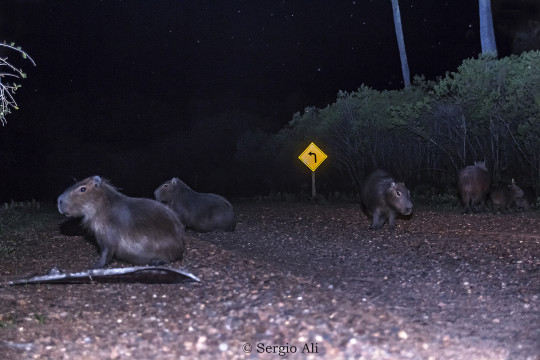
Capybara (Hydrochoerus hydrochaeris)
Photo by Sergio Ali
#fave#capybara#hydrochoerus hydrochaeris#hydrochoerus#hydrochoerinae#caviidae#caviomorpha#hystricognathi#hystricognathiformes#hystricomorpha#rodentia#glires#euarchontoglires#boreoeutheria#eutheria#mammalia#tetrapoda#vertebrata#chordata
272 notes
·
View notes
Photo

A young nutria rat at the Mönchbruch nature reserve in Kelsterbach, western Germany
Photograph: Dorothee Barth/DP/AFP/Getty
(via The week in wildlife – in pictures | Environment | The Guardian)
#Nutria#Myocastor coypus#Myocastor#Myocastorini#Echimyinae#Echimyidae#Octodontoidea#Caviomorpha#Hystricognathi#Hystricomorpha#Rodentia#Mammalia#mammal#Germany
15 notes
·
View notes
Photo
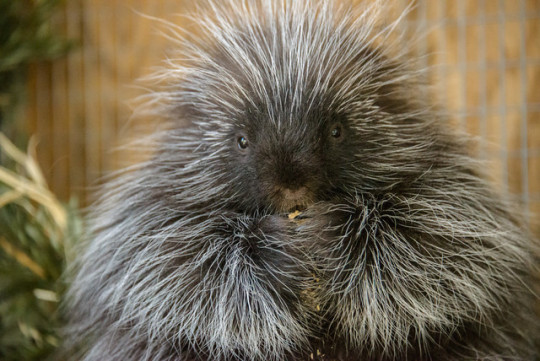
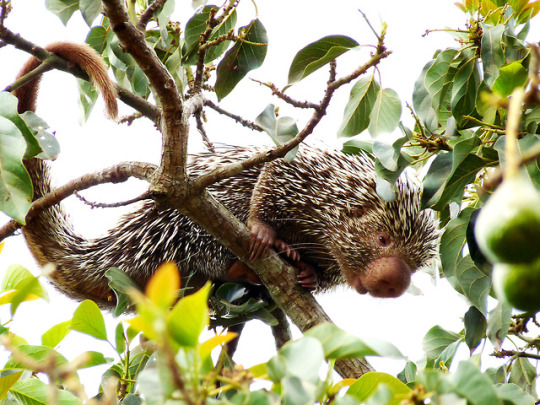



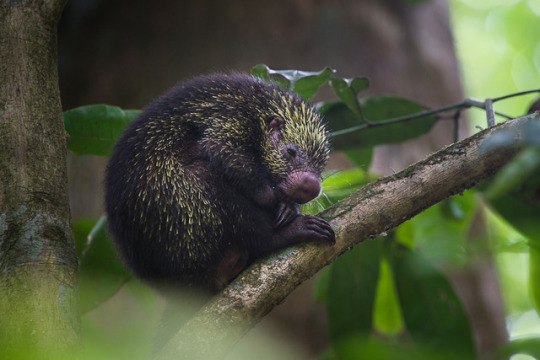

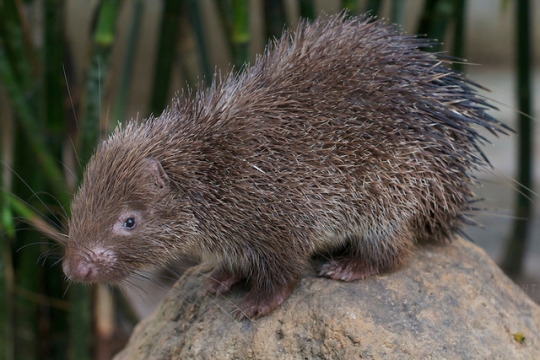


Porcupines are rodents with a coat of sharp spines, or quills, that protect against predators. The term covers two families of animals, the Old World porcupines of family Hystricidae, and the New World porcupines of family Erethizontidae. Both families belong to the infraorder Hystricognathi and display superficially similar coats of quills: despite this, the two groups are distinct from each other and are not closely related to each other. The name "porcupine" comes from Latin porcus pig + spina spine, quill, via Old Italian—Middle French—Middle English. A regional American name for the animal is quill pig.
1. North American Porcupine
2. Baturite Porcupine
3. African Brush-tailed Porcupine
4. Cape Porcupine
5. Prehensile Tailed Porcupine
6. Mexican Hairy Dwarf Porcupine
7. Malayan Porcupine
8. Phlippine Porcupine
9. Stump-tailed Porcupine
10. Bristle-spined Porcupine
Porcupines' quills, or spines, take on various forms, depending on the species, but all are modified hairs coated with thick plates of keratin and embedded in the skin musculature. Quills are released by contact or may drop out when the porcupine shakes its body. New quills grow to replace lost ones. Porcupines were long believed to have the ability to project their quills to a considerable distance at an enemy, but this has since been proven to be untrue.
Porcupines vary in size considerably: Rothschild's porcupine of South America weighs less than 2.2 lbs; the crested porcupine found in Italy, Sicily, North Africa, and sub-Saharan Africa can grow to well over 60 lbs.
The Old World porcupines live in southern Europe, Asia, and most of Africa. They are large, terrestrial, and strictly nocturnal. The New World porcupines are indigenous to North America and northern South America. They live in wooded areas and can climb trees, where some species spend their entire lives. They are less strictly nocturnal than their Old World relatives, and generally smaller.
The 11 Old World porcupines tend to be fairly large, and have spikes grouped in clusters. The two subfamilies of New World porcupines are mostly smaller (although the North American porcupine reaches about 33in in length and 40lb), have their quills attached singly rather than grouped in clusters, and are excellent climbers, spending much of their time in trees. The New World porcupines evolved their spines independently (through convergent evolution) and are more closely related to several other families of rodents than they are to the Old World porcupines.
Defensive behaviour displays in a porcupine depend on sight, scent and sound. Often, displays are shown when a porcupine becomes agitated or annoyed. There are four main displays seen in a porcupine which are quill erection, teeth clattering, emitting of odour, and attack. These displays are ranked from least aggressive to most aggressive respectively.
A porcupine's colouring aids in part of its defense as most of the predators are nocturnal and colour blind. A porcupine's markings are black and white. The dark body and coarse hair of the porcupine are a dark brown/black and when quills are raised, present a white strip down its back mimicking the look of a skunk. This, along with the raising of the sharp quills, deters predators.
Along with the raising of the quills, porcupines clatter their teeth causing warning noise to let predators know not to come closer. The incisors vibrate against each other, the strike zone shifts back and the cheek teeth clatter. This behaviour is often paired with body shivering which is used to further display the dangerous quills. The rattling of quills is aided by the hollow quills at the back end of the porcupine.
The use of odor is when the sight and sound have failed. An invasive scent is produced from the skin above the tail in times of stress, and is often seen with quill erection. If the above processes fail, the porcupine will attack by running sideways or backwards into predators. A porcupines tail is also able to swing in the direction of the predator. If contact is made, the quills could be impaled into the predator causing injury or death.
Porcupines are only occasionally eaten in Western culture, but are very popular in Southeast Asia, particularly Vietnam, where the prominent use of them as a food source has contributed to significant declines in their populations. More commonly, their quills and guardhairs are used for traditional decorative clothing. The main quills may be dyed, and then applied in combination with thread to embellish leather accessories such as knife sheaths and leather bags. Lakota women would harvest the quills for quillwork by throwing a blanket over a porcupine and retrieving the quills it left stuck in the blanket.
#porcupine#quill pig#new world porcupine#old world porcupine#north american porcupine#baturite porcupine#african brush-tailed porcupine#cape porcupine#prehensile tailed porcupine#mexican hairy dwarf porcupine#malayan porcupine#philippine porcupine#stump-tailed porcupine#bristle-spined porcupine#rodents#hystricidae#erethizontidae
84 notes
·
View notes
Text
Isostylomys: A Rodent of Unusual Size - #365papers - 2017 - 107
Isostylomys: A Rodent of Unusual Size – #365papers – 2017 – 107
#365papers for April 17, 2017 Rinderknecht, Bostelmann, annd Ubilla, 2017, Making a giant rodent: cranial anatomy and ontogenetic development in the genus Isostylomys (Mammalia, Hystricognathi, Dinomyidae): Journal of Systematic Palaeontology, DOI: 10.1080/14772019.2017.1285360. What’s it about? Isostylomys is (was) a giant rodent from the Miocene of Uruguay. By giant, I mean larger than the…
View On WordPress
0 notes
Photo

North American porcupine (Erethizon dorsatum)
Photo by Gerry
#north american porcupine#porcupine#erethizon dorsatum#erethizon#erethizontinae#erethizontidae#caviomorpha#hystricognathi#hystricognathiformes#hystricomorpha#rodentia#glires#euarchontoglires#boreoeutheria#eutheria#mammalia#tetrapoda#vertebrata#chordata
28 notes
·
View notes
Photo
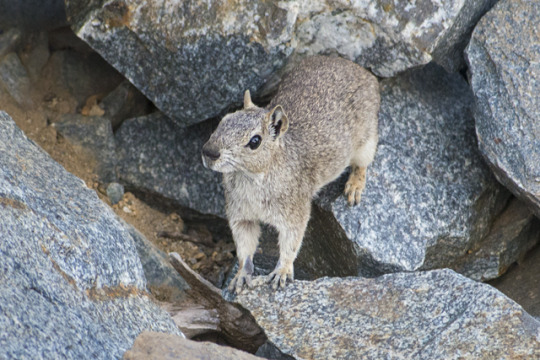
Mocó (Kerodon rupestris)
Photo by Cláudio Dias Timm
#mocó#moco#rock cavy#kerodon rupestris#kerodon#hydrochoerinae#caviidae#caviomorpha#hystricognathi#hystricognathiformes#hystricomorpha#rodentia#glires#euarchontoglires#boreoeutheria#eutheria#mammalia#tetrapoda#vertebrata#chordata
78 notes
·
View notes
Photo

Patagonian mara (Dolichotis patagonum)
Photo by charliejb
#captive animal#patagonian mara#mara#dolichotis patagonum#dolichotis#dolichotinae#caviidae#caviomorpha#hystricognathi#hystricognathiformes#hystricomorpha#rodentia#glires#euarchontoglires#boreoeutheria#eutheria#mammalia#tetrapoda#vertebrata#chordata
86 notes
·
View notes
Photo

Mocó (Kerodon rupestris)
Photo by Allan Hopkins
#mocó#rock cavy#kerodon rupestris#kerodon#hydrochoerinae#caviidae#caviomorpha#hystricognathi#hystricognathiformes#hystricomorpha#rodentia#glires#euarchontoglires#boreoeutheria#eutheria#mammalia#tetrapoda#vertebrata#chordata
25 notes
·
View notes
Photo

Coypu (Myocastor coypus)
Photo by Randy E. Crisp
#coypu#nutria#myocastor coypus#myocastor#myocastorini#echimyinae#echimyidae#octodontoidea#caviomorpha#hystricognathi#hystricognathiformes#hystricomorpha#rodentia#glires#euarchontoglires#boreoeutheria#eutheria#mammalia#tetrapoda#vertebrata#chordata
13 notes
·
View notes
Photo

Brazilian guinea pig (Cavia aperea)
Photo by Jon Atkinson
#brazilian guinea pig#guinea pig#cavia aperea#cavia#caviinae#caviidae#caviomorpha#hystricognathi#hystricognathiformes#hystricomorpha#rodentia#glires#euarchontoglires#boreoeutheria#eutheria#mammalia#tetrapoda#vertebrata#chordata
52 notes
·
View notes
Photo

Porcupine (via USFWS Mountain-Prairie)
A porcupine has approximately 30,000 quills on its body.
Photo Credit: Mike Mauro/USFWS
#North American Porcupine#Porcupine#Erethizon dorsatum#Erethizon#Erethizontinae#Erethizontidae#Erethizontoidea#Caviomorpha#Hystricognathi#Rodentia#Mammalia#cottonwood#Rocky Flats National Wildlife Refuge#Rocky Flats NWR#Colorado
20 notes
·
View notes
Photo

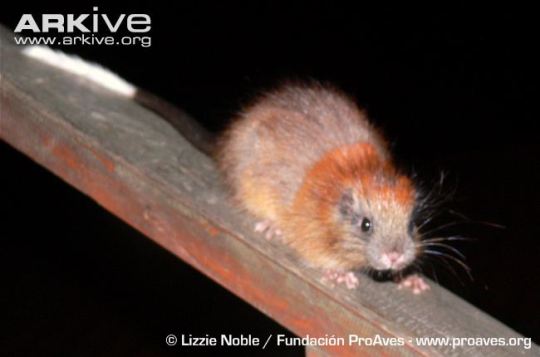

Red-crested tree rat (Santamartamys rufodorsalis)
The red-crested tree rat had not been recorded since 1898, until it was spied on 4 May 2011 at the El Dorado Nature Reserve in northern Colombia, owned and protected by World Land Trust (WLT) partner ProAves. Volunteers at the reserve, who are researching endangered amphibians, stumbled across this animal when it showed up at their EcoLodge in the evening. This pretty red-furred rodent, described as being the size of a guinea pig, is from a unique genus and could only be identified by two specimens collected in 1880. The species is estimated to be Critically Endangered, so it’s lucky that it was found in a protected area. If you want to help keep the red-crested tree rat’s habitat safe, you can donate to WLT here.
Classification
Animalia - Chordata - Mammalia - Eutheria - Boreoeutheria - Euarchontoglires - Glires - Rodentia - Hystricomorpha - Hystricognathiformes - Hystricognathi - Caviomorpha - Octodontoidea - Echimyidae - Echimyinae - Santamartamys - S. rufodorsalis
Images: [x] [x] [x]
Source: [x]
#red crested tree rat#santamartamys rufodorsalis#santamartamys#echimyinae#echimyidae#octodontoidea#caviomorpha#hystricognathi#hystricognathiformes#hystricomorpha#rodentia#glires#euarchontoglires#boreoeutheria#critically endangered#eutheria#mammalia#tetrapoda#vertebrata#chordata#species feature
64 notes
·
View notes